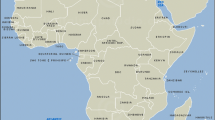Abstract
Industrial development in Visakhapatnam is conspicuous to urban agglomeration and the city is located in a topographical bowl formed by two-hill ranges. A major portion of the city is within the bowl area wherein most of the industrial and commercial activities are existing and lies within a distance of 10 km from the shore of the Bay of Bengal. Due to the peculiar geographic location of city, wind movement is either eastern or western and is engulfed within the hill ranges. Hence, there is a possibility of buildup of air pollution levels within the city.Due to gravity of prevailing situation, air quality status of Visakhapatnam on indices basis is analyzed using a non-linear equation for variable parameters i.e. Suspended particulate matter (SPM), Sulfur dioxide(SO2) and Oxides of nitrogen (NOx), which are main criteria pollutants in India. For current analysis seasonal air quality data is used, which indicates SPM values in winter at most of the sites and in summer at few sites are exceeding the prescribed standards.Calculated indices reveal that, in winter as well as in summer, most of the locations experienced poor or bad air quality, which is mainly due to higher concentration of SPM and certain extent of SO2 values. Application of Oak Ridge Air Quality Index (ORAQI) type equations (non-linear) are helpful for air quality management plan in the region on long term basis and it has been also observed that there are certain lapses of weightage assignment for individual pollutant in application.
Similar content being viewed by others
References
Annon: 1997, ‘Measuring Air Quality the Pollutant Standard Index’, U.S. EPA, 451/K-94-001, February.
Joshi, S. G.: 1984, ‘Air Quality Indices’, Training manual on air pollution monitoring and assessment, WHO-SEARO, New Delhi.
Minnesota Pollution Control Agency, Division of Air Quality, Minnesota, USAm. NEERI, EIA Report (1994–95)
Ott, W. R. and Thom, G. C.: 1976, ‘A critical review of air pollution index systems in the US and Canada’, JAPCA V20(10), 460–470.
Thom, G. C. and Ott, W. R.: 1975a, ‘Air Pollution Indices’, A Compendium and Assessment of Indices used in the United States and Canada, Joint study sponsored by the Council on Environmental Quality and U.S. EPA.
Thom, G. C. and Ott, W. R.: 1975b, ‘A proposed uniform air pollution index’, Atmos. Environ. V 10, 261–264.
Thoms, W. A., Babcoak Jr., L. R. and Shults, W. D.: ‘Oak Ridge Air Quality Index’, ORNL-NSFEP-8, Oak Ridge National Laboratory.
Author information
Authors and Affiliations
Corresponding author
Rights and permissions
About this article
Cite this article
Reddy, M.K., Rama Rao, K.G. & Rammohan Rao, I. Air Quality Status of Visakhapatnam (India) – Indices Basis. Environ Monit Assess 95, 1–12 (2004). https://doi.org/10.1023/B:EMAS.0000029899.31965.33
Issue Date:
DOI: https://doi.org/10.1023/B:EMAS.0000029899.31965.33




